In his review of the Malawi Bvumbwe Peony White Tea, Northern Teaist suggested that it might be interesting to compare the Malawi Bvumbwe Peony White Tea with a Chinese counterpart. I actually have some Baimudan (aka the Peony White Tea) from Fujian after the last Book & Brew’s tea tasting session, so I decided to compare the two of them.
Dry Leaves
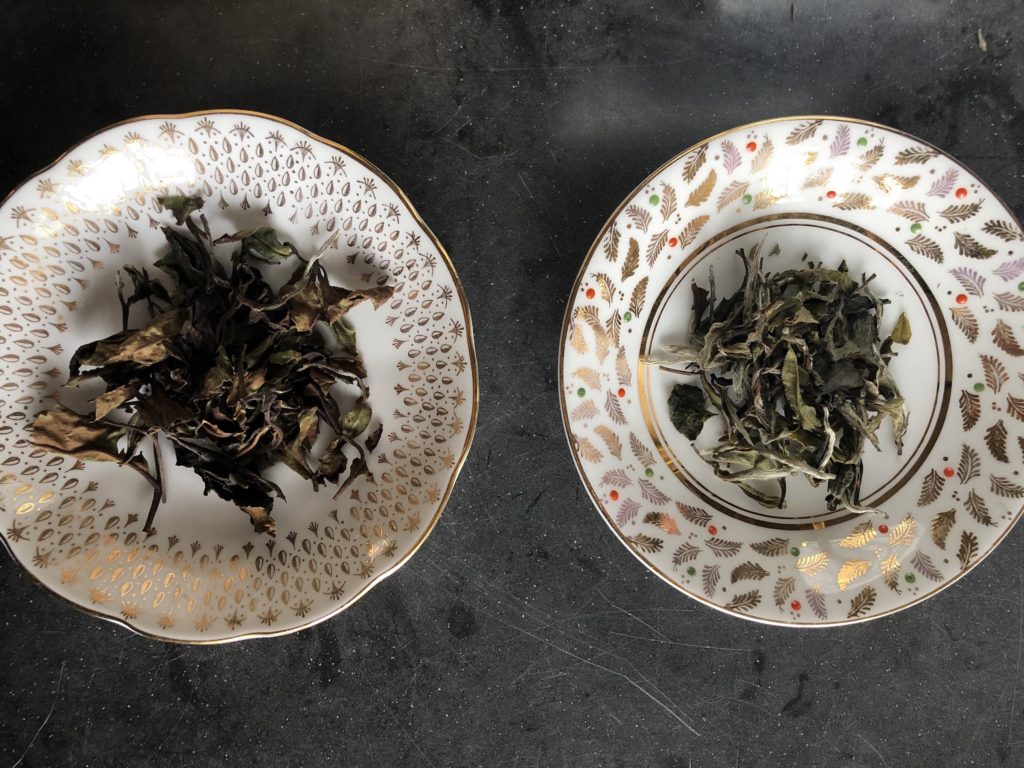
I was expecting this to be a really close comparison because the only difference should be terroir (since white tea is minimally processed) so I was surprised by how different the leaves are! The white peony leaves from Malawi are obviously darker and remind me more off fallen leaves, while the white peony leaves from Fujian are a lot whiter.
Tasting Comparison
Round 1
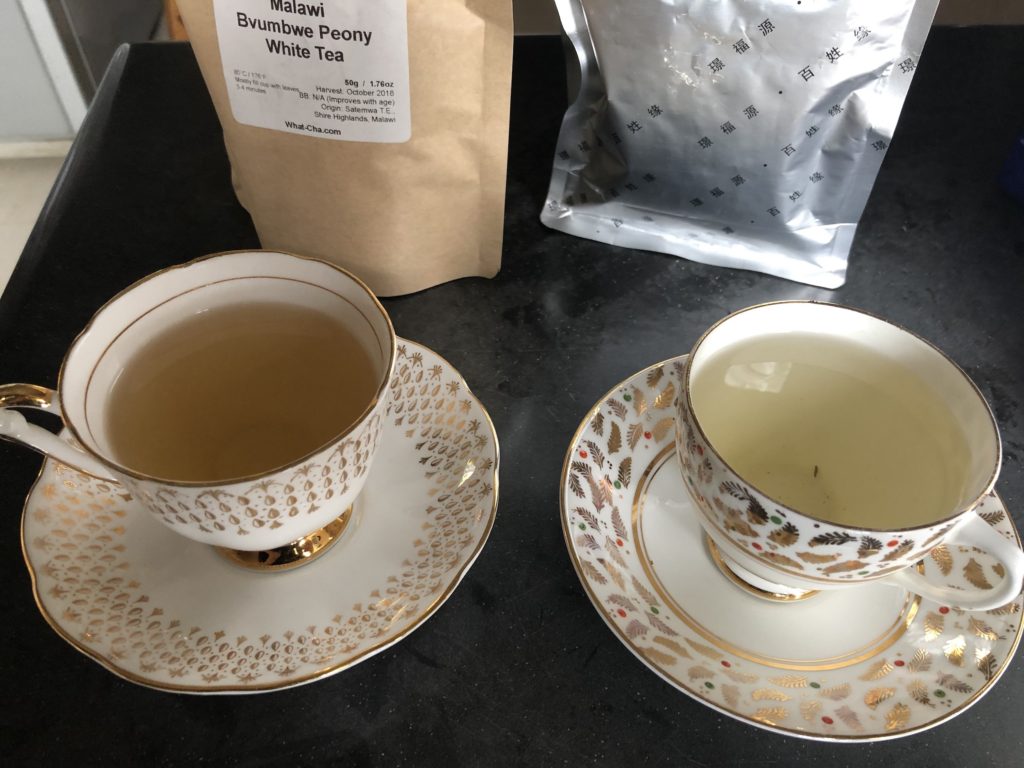
The tea liquor for the Malawi White Peony is much darker. The tasting notes are very much like what I noted in my review (which is a relief because it means that I’m at least getting consistent tastes and did not have an off day for the two brewing sessions!). It reminds me of black tea – woody notes and that osmanthus/waxy note. The Fujian White Peony, on the other hand, is lighter, sweeter, and more floral. The lightness is in the mouthfeel, rather than just being lighter in taste.
Round 2
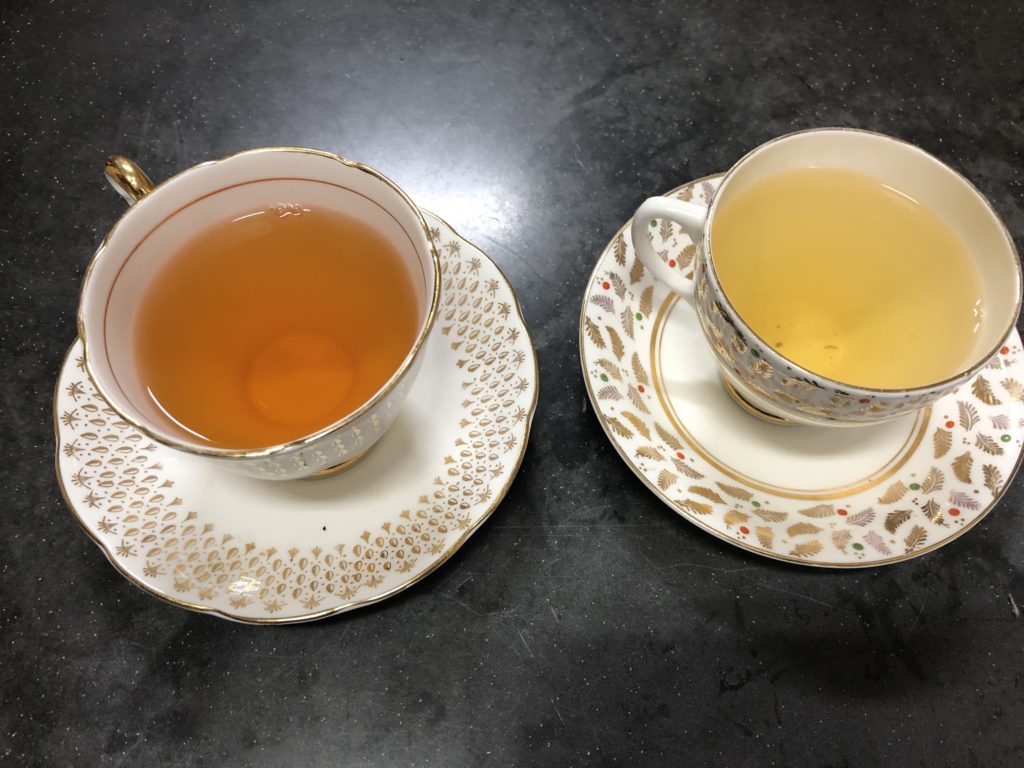
It had started raining pretty heavily by this point, which is why the pictures for the second round are so different – the lighting totally changed. I also steeped the leaves for a little while longer, to see if that would accentuate the differences. The Malawi White Peony looked and tasted very much like a Chinese black tea – it was a bit astringent but basically had a lot of woody and sweet notes. The Fujian White Peony tasted like a slightly deeper version of the first steep. I have to say, it actually felt unfair comparing the two teas – the Malwai White Peony is so much stronger that the notes Fujian White Tea become very easy to miss.
Round 3
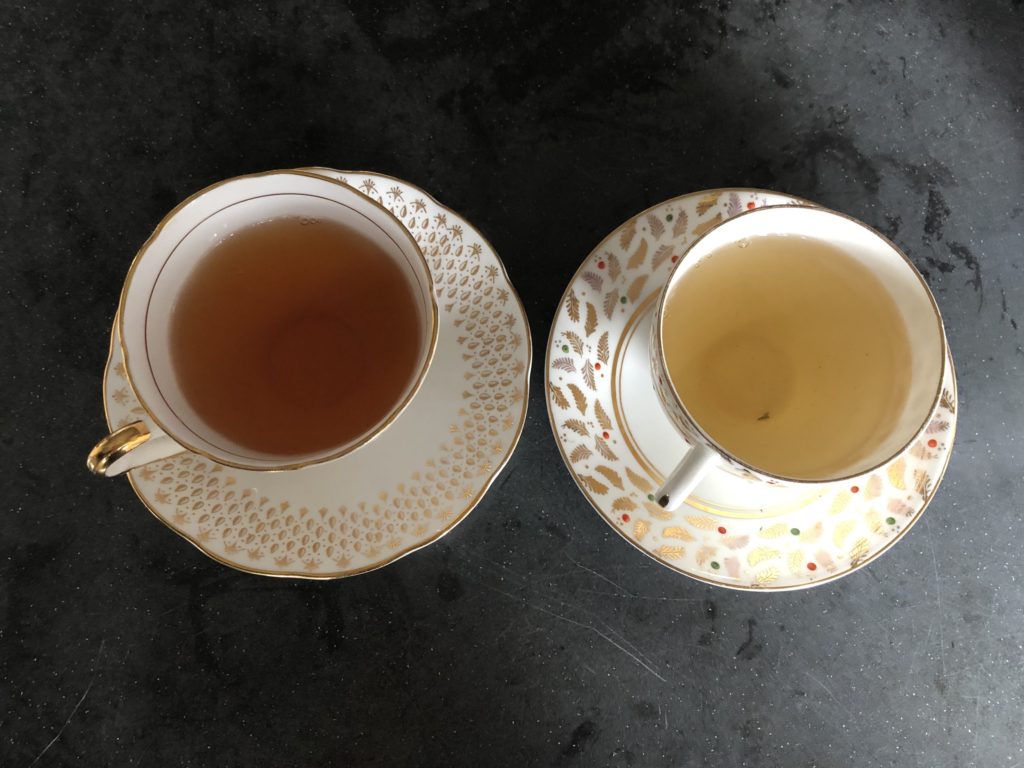
There weren’t any surprises in this round. The Malawi White Peony did have some slight bitter notes that I felt at the sides of my tongue, but otherwise was like the previous two steeps. By comparison, the Fujian White Peony was very smooth with slight floral notes.
Round 4 – Cold Brew
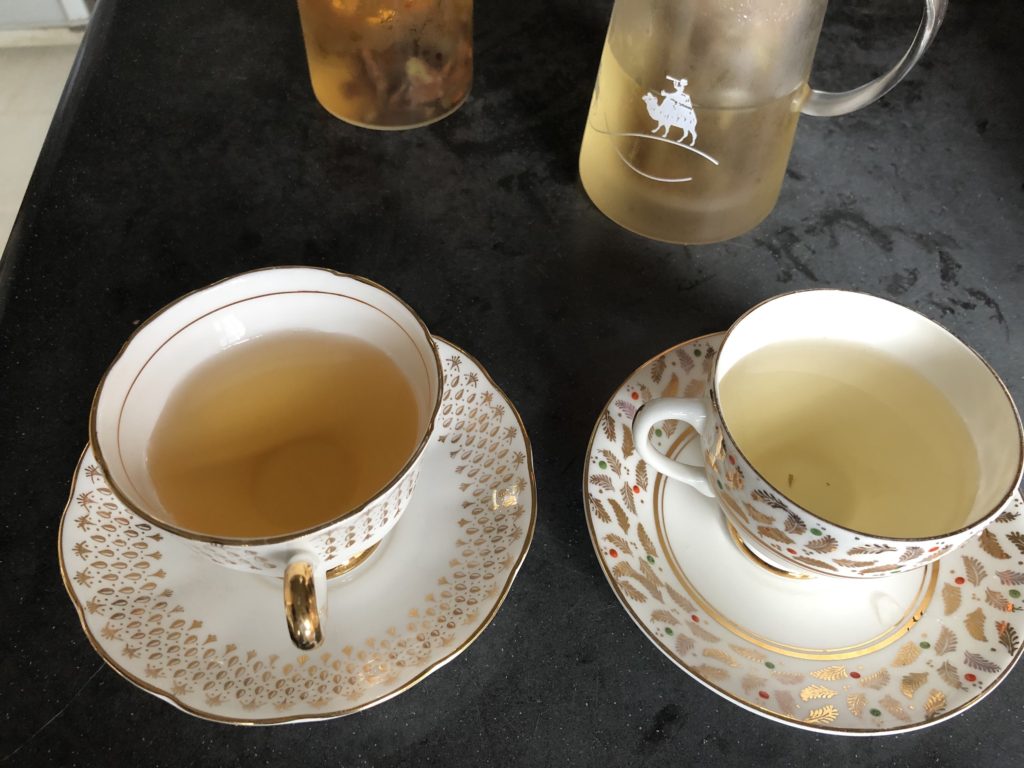
Just for fun, I put some fresh leaves in to cold brew overnight, just to see what would happen. The Malawi White Peony had a light amber tea liquor with unexpected fruity notes and was very sweet. The Fujian White Peony was also sweet, but had floral notes instead. It’s a very soft tea – the word “velvet” popped into mind – and the tea lingers in your mouth even after you’ve swallowed it.
Spent Leaves
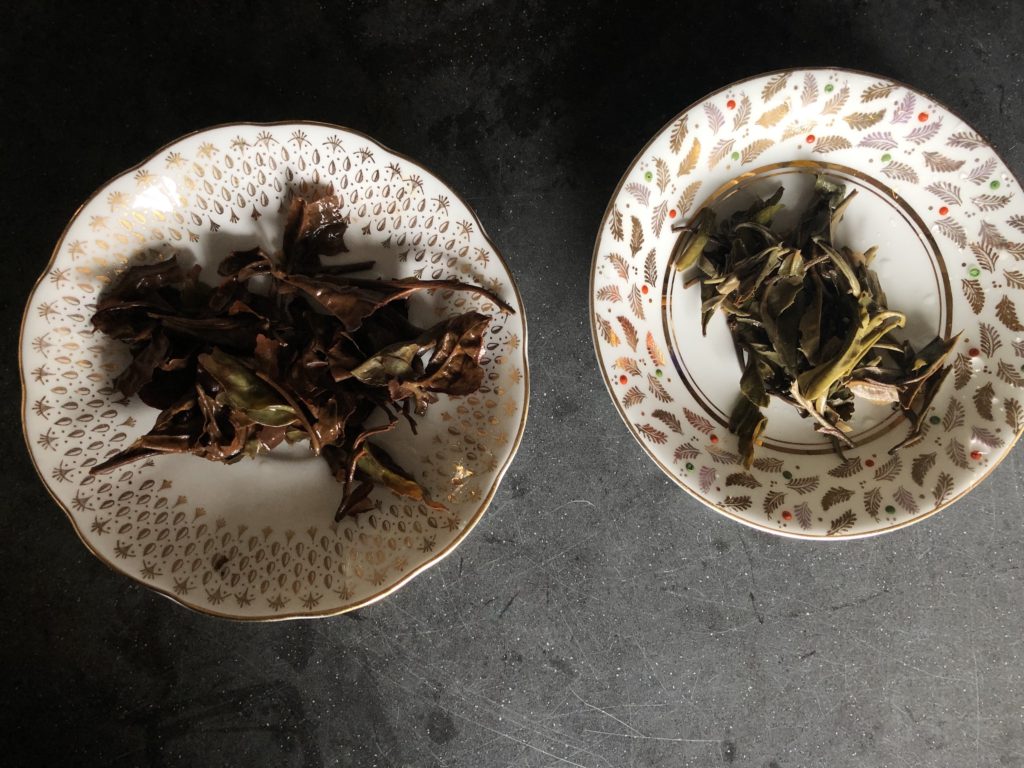
And here is a picture of the spent leaves for comparison. As you can see, the Malawi White Peony is a lot darker in comparison. I wonder if that’s because of terroir, or if the leaves were somehow oxidised a little?
Conclusion
When brewing the tea hot, I found that I preferred the Malawi Buvmbwe because it had stronger, more flavourful notes. When cold brewing the tea, however, I ended up preferring the Fujian White Peony because you could really taste its delicate floral sweetness.
Either way, both teas are great! The note on the package does say that these teas get better as they age, so I’m considering hiding some away to see how they’d do next year.
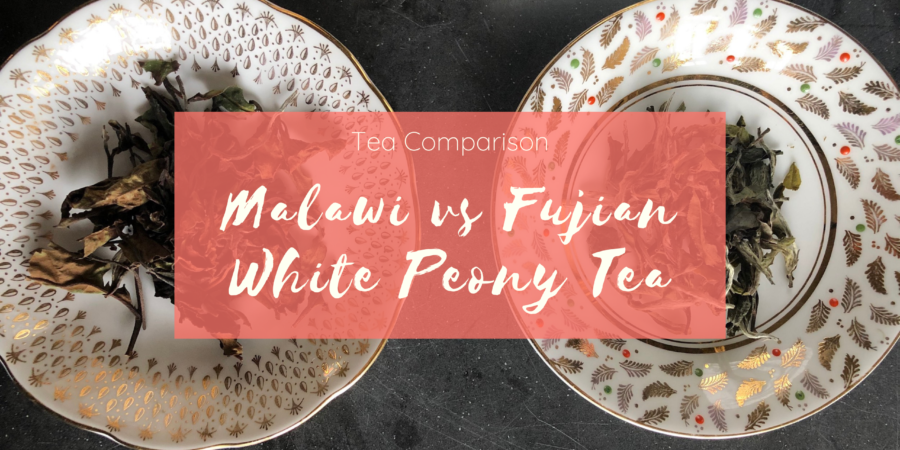
Wow – I was expecting some kind of difference, but not that much!
Yup, I think the drying part of the processing would account for a large part of the difference. As I understand it there’s usually a bit of oxidation, mainly because it’s almost impossible to prevent some bruising to the leaves. Then there’s how long the drying takes – some factories use or finish off with a hot air drying process IIRC which means shorter drying times and therefore less oxidation.
I was really surprised at how obvious the difference was as well!
Ooooh it’s interesting to hear about the different feelings in the mouth! I can find myself not enjoying a tea (even if I like a flavour) if it leaves a fluffy feeling in my mouth after swallowing
That makes sense! Mouthfeel is a pretty important part of tea tasting, imo.
By the way, What Cha (where I got the Malawi tea) is based in the UK! They have loads of interesting sounding teas too (:
Ooooh that’s so good to know!! Damn it woman if you get me obsessed with tea!
Hehe that may or may not be my secret mission with everyone I meet.